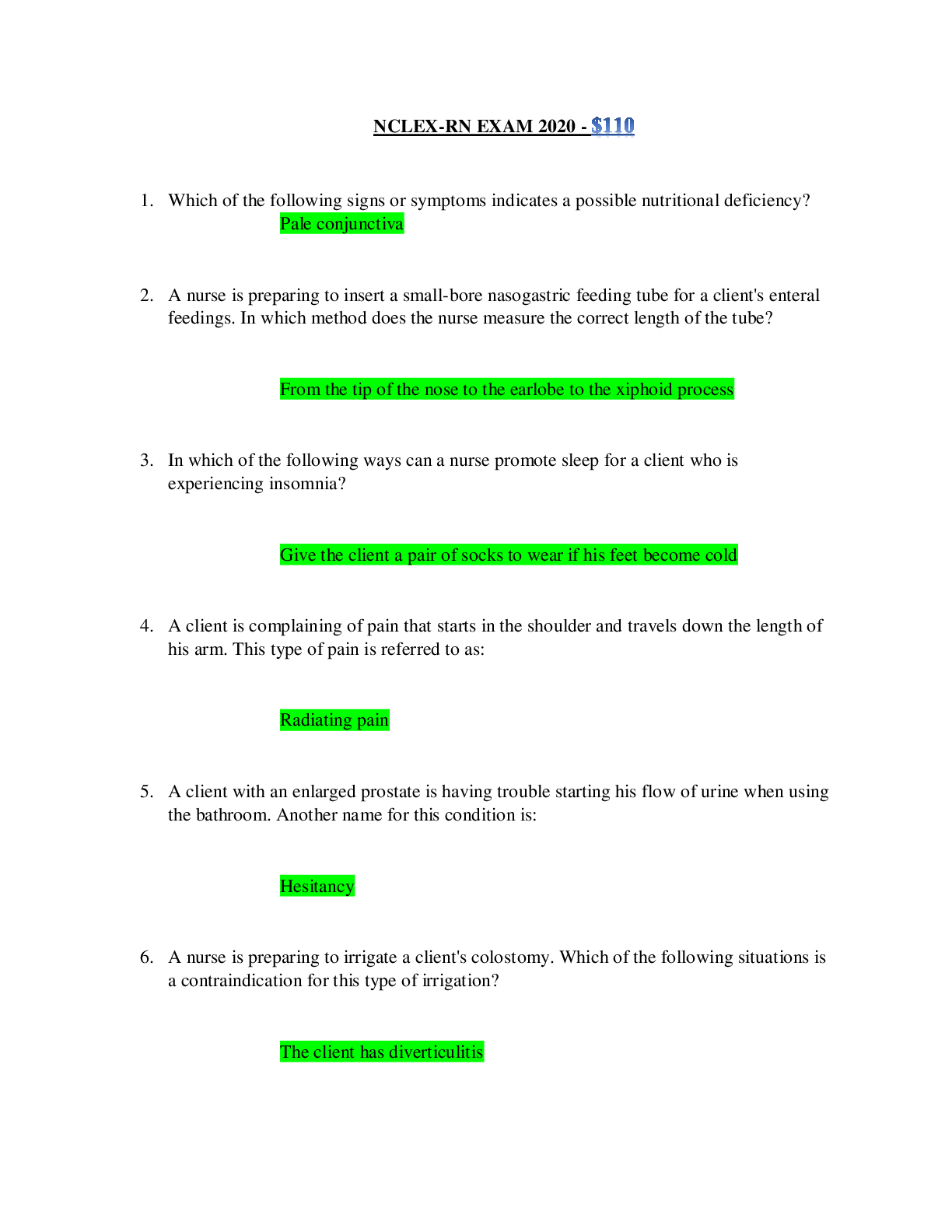*NURSING > NCLEX-RN > C H A P T E R 1 7 Theories of Growth and Development: From Saunders Comprehensive Review for the NCL (All)
C H A P T E R 1 7 Theories of Growth and Development: From Saunders Comprehensive Review for the NCLEX-RN Examination 8th Edition. (Available: https://bit.ly/2HeJuMt ). Contains Practice questions and Answers with the Rationale, Test-Taking Strategy, Level of Cognitive Ability, Client Needs, Integrated Process, Content Area, Health Problem, Priority Concepts and References
Document Content and Description Below
Priority Concepts Development, Health Promotion I. Psychosocial Development: Erik Erikson A. The theory 1. Erikson’s theory of psychosocial development describes the human life cycle as a serie... s of 8 developmental stages from birth to death. 2. Each stage presents a psychosocial crisis in which the goal is to integrate physical, maturation, and societal demands. 3. The result of 1 stage may not be permanent, but can be changed by experience(s) later in life. 4. The theory focuses on psychosocial tasks that should be accomplished throughout the life cycle. B. Psychosocial development: Occurs through a lifelong series of crises affected by social and cultural factors According to Erikson’s theory of psychosocial development, each psychosocial crisis must be resolved for the child or adult to progress emotionally. Unsuccessful resolution can leave the person emotionally disabled. C. Stages of psychosocial development (Table 17-1) D. Interventions to assist the client in achieving Erikson’s stages of development (Box 17-1) II. Cognitive Development: Jean Piaget A. The theory 1. Piaget’s theory of cognitive development defines cognitive acts as ways in which the mind organizes and adapts to its environment (i.e., “mental mapping”). 2. Schema refers to an individual’s cognitive structure or 530framework of thought. 3. Schemata a. Schemata are categories that an individual forms in his or her mind to organize and understand the world. b. A young child has only a few schemata with which to understand the world, and gradually these are increased in number. c. Adults use a wide variety of schemata to understand the world. 4. Assimilation a. Assimilation is the ability to incorporate new ideas, objects, and experiences into the framework of one’s thoughts. b. The growing child will perceive and give meaning to new information according to what is already known and understood. 5. Accommodation a. Accommodation is the ability to change a schema to introduce new ideas, objects, or experiences. b. Accommodation changes the mental structure so that new experiences can be added. B. Stages of cognitive development 1. Sensorimotor stage a. Birth to 2 years b. Development proceeds from reflex activity to imagining and solving problems through the senses and movement. c. The infant or toddler learns about reality and how it works. d. The infant or toddler does not recognize that objects continue to be in existence if they are out of the visual field. 2. Preoperational stage a. 2 to 7 years b. The child learns to think in terms of past, present, and future. c. The child moves from knowing the world through sensation and movement to prelogical thinking and finding solutions to problems. 531d. The child is egocentric. e. The child is unable to conceptualize and requires concrete examples. 3. Concrete operational a. 7 to 11 years b. The child is able to classify, order, and sort facts. c. The child moves from prelogical thought to solving concrete problems through logic. d. The child begins to develop abstract thinking. e. The child is less egocentric and thinks about how others may view a situation. 4. Formal operational a. 11 years to adulthood b. The person is able to think abstractly and logically. c. Logical thinking is expanded to include solving abstract and concrete problems. III. Moral Development: Lawrence Kohlberg A. Moral development 1. Moral development is a complicated process involving the acceptance of the values and rules of society in a way that shapes behavior. 2. Moral development is classified in a series of levels and behaviors. 3. Moral development is sequential. 4. Stages or levels of moral development cannot be skipped. B. Levels of moral development (Box 17-2) IV. Psychosexual Development: Sigmund Freud A. Components of the theory (Box 17-3) B. Levels of awareness 1. Unconscious level of awareness a. The unconscious is not logical and is governed by the Pleasure Principle, which refers to seeking immediate tension reduction. b. Memories, feelings, thoughts, or wishes are repressed and are not available to the conscious mind. c. These repressed memories, thoughts, or feelings, if made prematurely conscious, can cause anxiety 5322. Preconscious level of awareness a. The preconscious is called the subconscious. b. The preconscious includes experiences, thoughts, feelings, or desires that might not be in immediate awareness but can be recalled to consciousness. c. The subconscious can help repress unpleasant thoughts or feelings and can examine and censor certain wishes and thinking. 3. Conscious level of awareness a. The conscious mind is logical and is regulated by the Reality Principle. b. Consciousness includes all experiences that are within an individual’s awareness and that the individual is able to control and includes all information that is remembered easily and is immediately available to an individual. C. Agencies of the mind: id, ego, and superego The id, ego, and superego are the 3 systems of personality. These psychological processes follow different operating principles. In a mature and welladjusted personality, they work together as a team under the leadership of the ego. 1. The id a. Source of all drives, present at birth; operates according to the Pleasure Principle b. Does not tolerate uncomfortable states and seeks to discharge the tension and return to a more comfortable, constant level of energy c. Acts immediately in an impulsive, irrational way and pays no attention to the consequences of its actions; therefore, often behaves in ways harmful to self and others d. The primary process is a psychological activity in which the id attempts to reduce tension. e. The primary process by itself is not capable of reducing tension; therefore, a secondary psychological process 533must develop if the individual is to survive. When this occurs, the structure of the second system of the personality, the ego, begins to take form. 2. The ego a. Functions include reality testing and problem solving; follows the Reality Principle b. Begins its development during the fourth or fifth month of life c. Emerges out of the id and acts as an intermediary between the id and the external world d. Emerges because the needs, wishes, and demands of the id require appropriate exchanges with reality e. The ego distinguishes between things in the mind and things in the external world 149. The clinic nurse is preparing to explain the concepts of Kohlberg’s theory of moral development with a parent. The nurse should tell the parent that which factor motivates good and bad actions for the child at the preconventional level? 1. Peer pressure 2. Social pressure 3. Parents’ behavior 4. Punishment and reward 150. The maternity nurse is providing instructions to a new mother regarding the psychosocial development of the newborn infant. Using Erikson’s psychosocial development theory, the nurse instructs the mother to take which measure? 1. Allow the newborn infant to signal a need. 2. Anticipate all needs of the newborn infant. 3. Attend to the newborn infant immediately when crying. 4. Avoid the newborn infant during the first 10 minutes of crying. 540151. The nurse notes that a 6-year-old child does not recognize that objects exist when the objects are outside of the visual field. Based on this observation, which action should the nurse take? 1. Report the observation to the pediatrician 2. Move the objects in the child’s direct field of vision. 3. Teach the child how to visually scan the environment. 4. Provide additional lighting for the child during play activities. 152. A nursing student is presenting a clinical conference to peers regarding Freud’s psychosexual stages of development, specifically the anal stage. The student explains to the group that which characteristic relates to the anal stage? 1. This stage is associated with toilet training. 2. This stage is characterized by the gratification of self. 3. This stage is characterized by a tapering off of conscious biological and sexual urges. 4. This stage is associated with pleasurable and conflicting feelings about the genital organs. 153. The nurse is describing Piaget’s cognitive developmental theory to pediatric nursing staff. The nurse should tell that staff that which child behavior is characteristic of the formal operations stage? 1. The child has the ability to think abstractly. 2. The child begins to understand the environment. 3. The child is able to classify, order, and sort facts. 4. The child learns to think in terms of past, present, and future. 154. The mother of an 8-year-old child tells the clinic nurse that she is concerned about the child because the child seems to be more attentive to friends than anything else. Using Erikson’s psychosocial development theory, the nurse should make which response? 1. “You need to be concerned.” 2. “You need to monitor the child’s behavior closely.” 3. “At this age, the child is developing his own personality.” 4. “You need to provide more praise to the child to stop this behavior.” 155. The nurse educator is preparing to conduct a teaching session for the nursing staff regarding the theories of growth and development and plans to discuss Kohlberg’s theory of moral development. What information should the nurse include in the session? Select all that apply. 1. Individuals move through all 6 stages in a sequential fashion. 2. Moral development progresses in relationship to cognitive development. 3. A person’s ability to make moral judgments develops over a period of time. 4. The theory provides a framework for understanding how individuals determine a moral code to guide their behavior. 5. In stage 1 (punishment-obedience orientation), children are 541expected to reason as mature members of society. 6. In stage 2 (instrumental-relativist orientation), the child conforms to rules to obtain rewards or have favors returned. 156. A parent of a 3-year-old tells a clinic nurse that the child is rebelling constantly and having temper tantrums. Using Erikson’s psychosocial development theory, which instructions should the nurse provide to the parent? Select all that apply. 1. Set limits on the child’s behavior. 2. Ignore the child when this behavior occurs. 3. Allow the behavior, because this is normal at this age period. 4. Provide a simple explanation of why the behavior is unacceptable. 5. Punish the child every time the child says “no” to change the behavior. [Show More]
Last updated: 1 year ago
Preview 1 out of 16 pages

Reviews( 0 )
Document information
Connected school, study & course
About the document
Uploaded On
Oct 22, 2020
Number of pages
16
Written in
Additional information
This document has been written for:
Uploaded
Oct 22, 2020
Downloads
0
Views
108


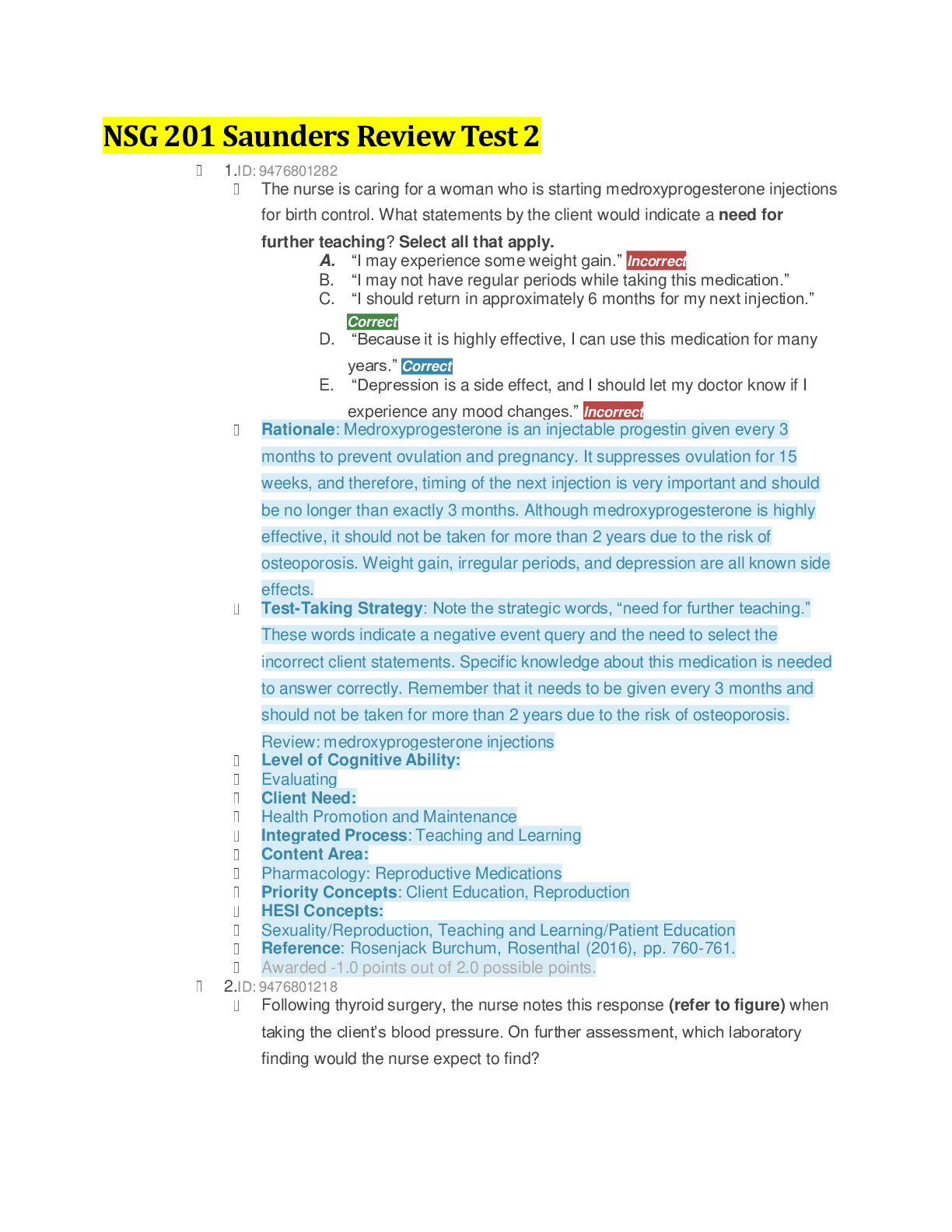

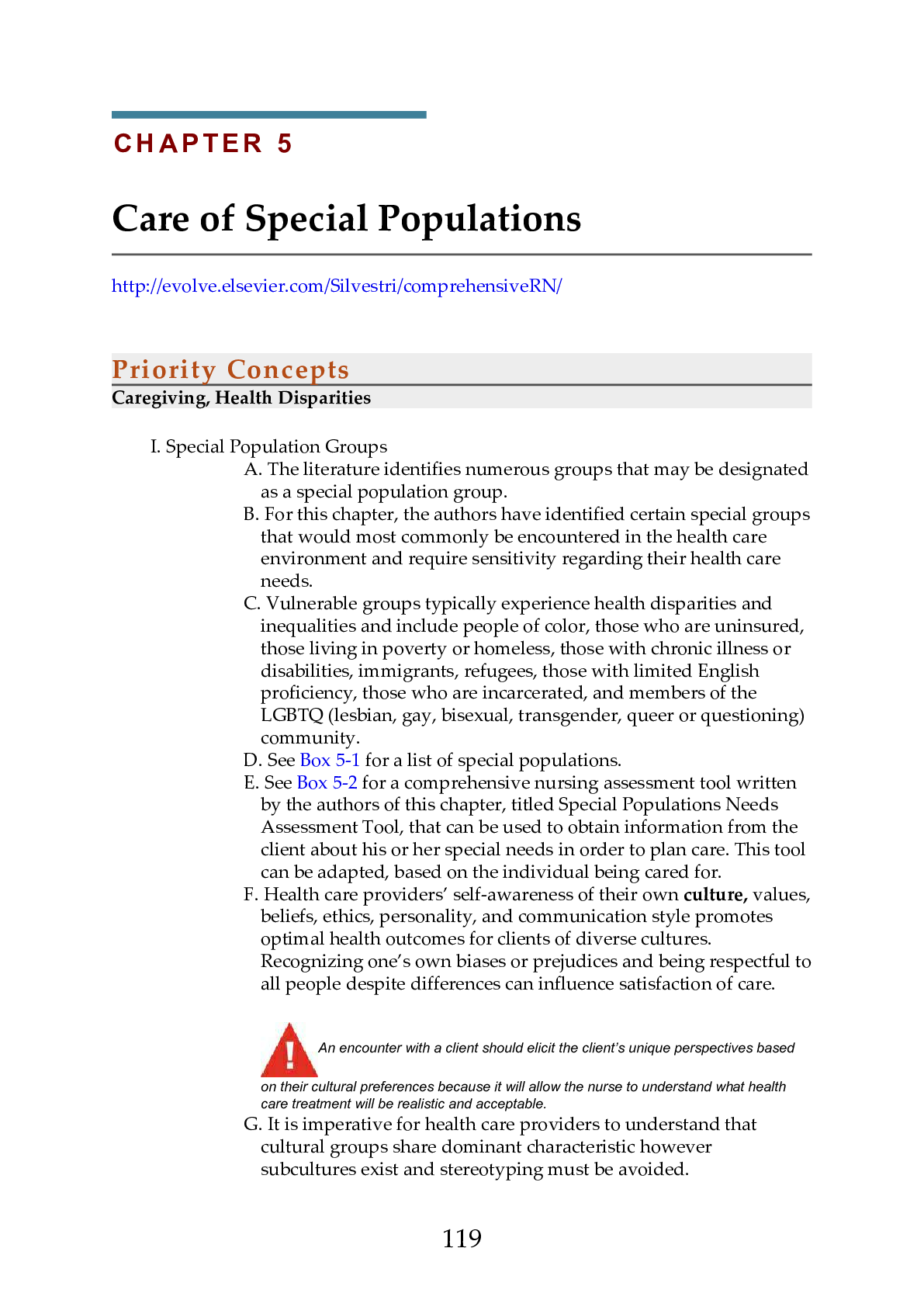

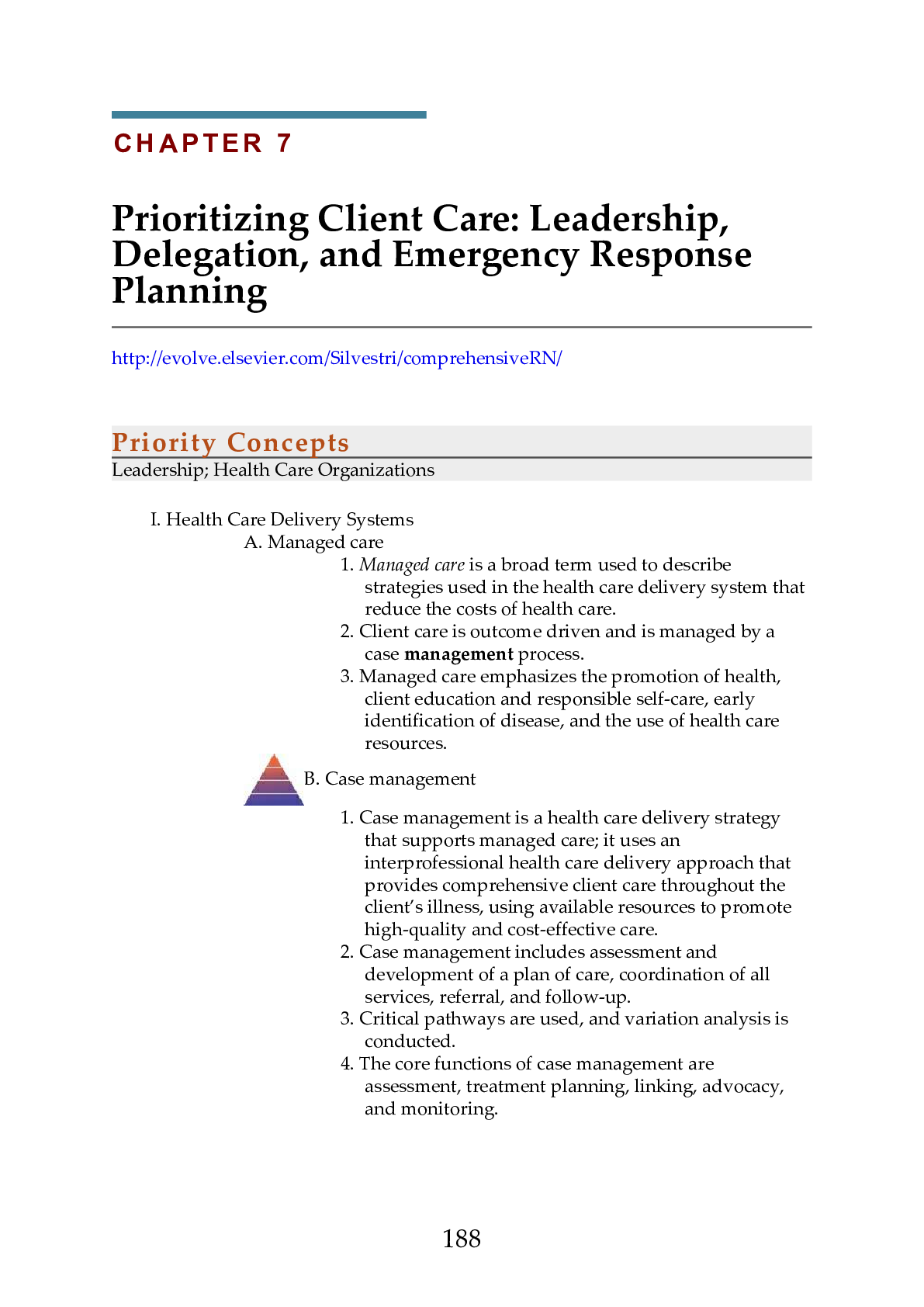

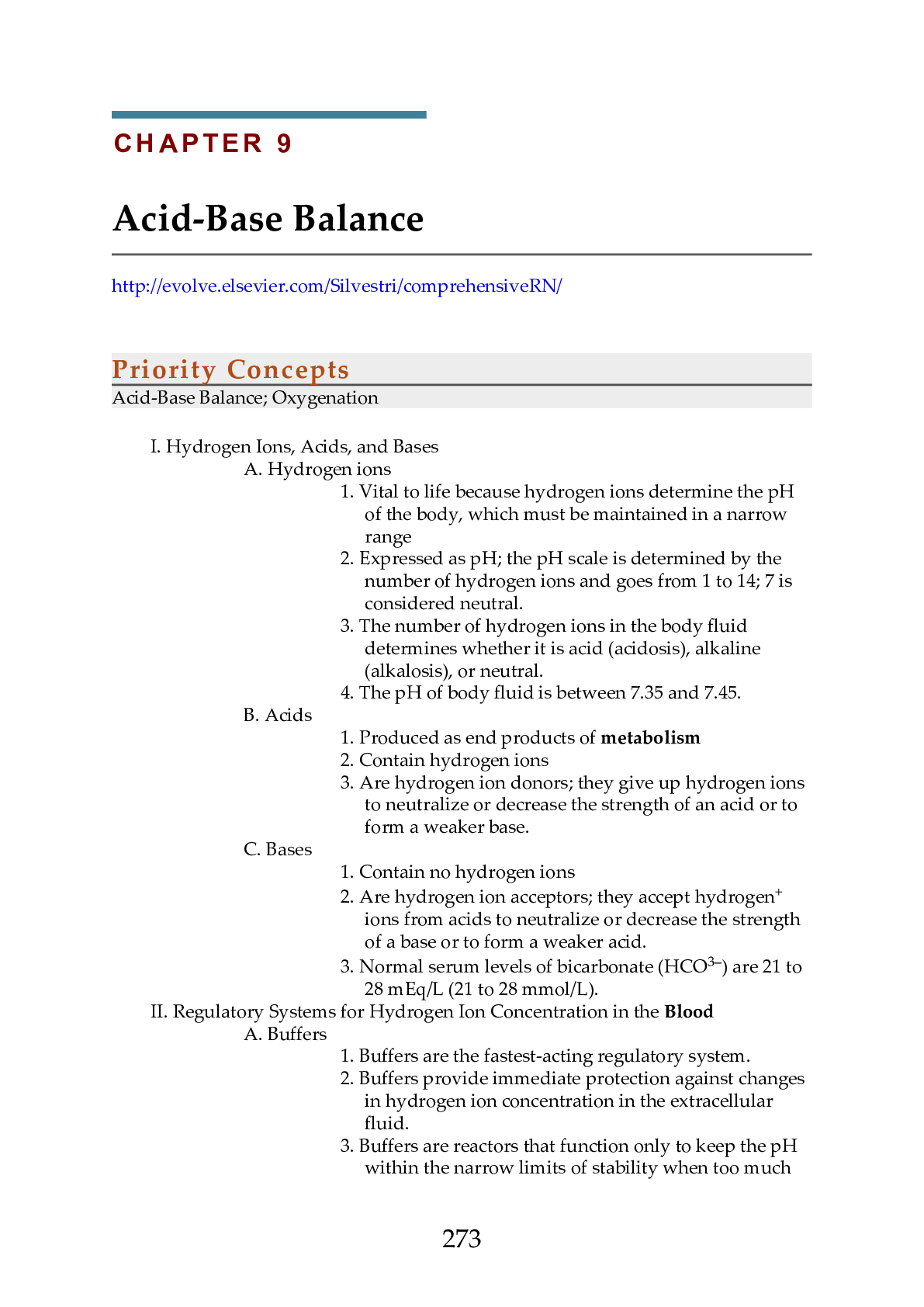



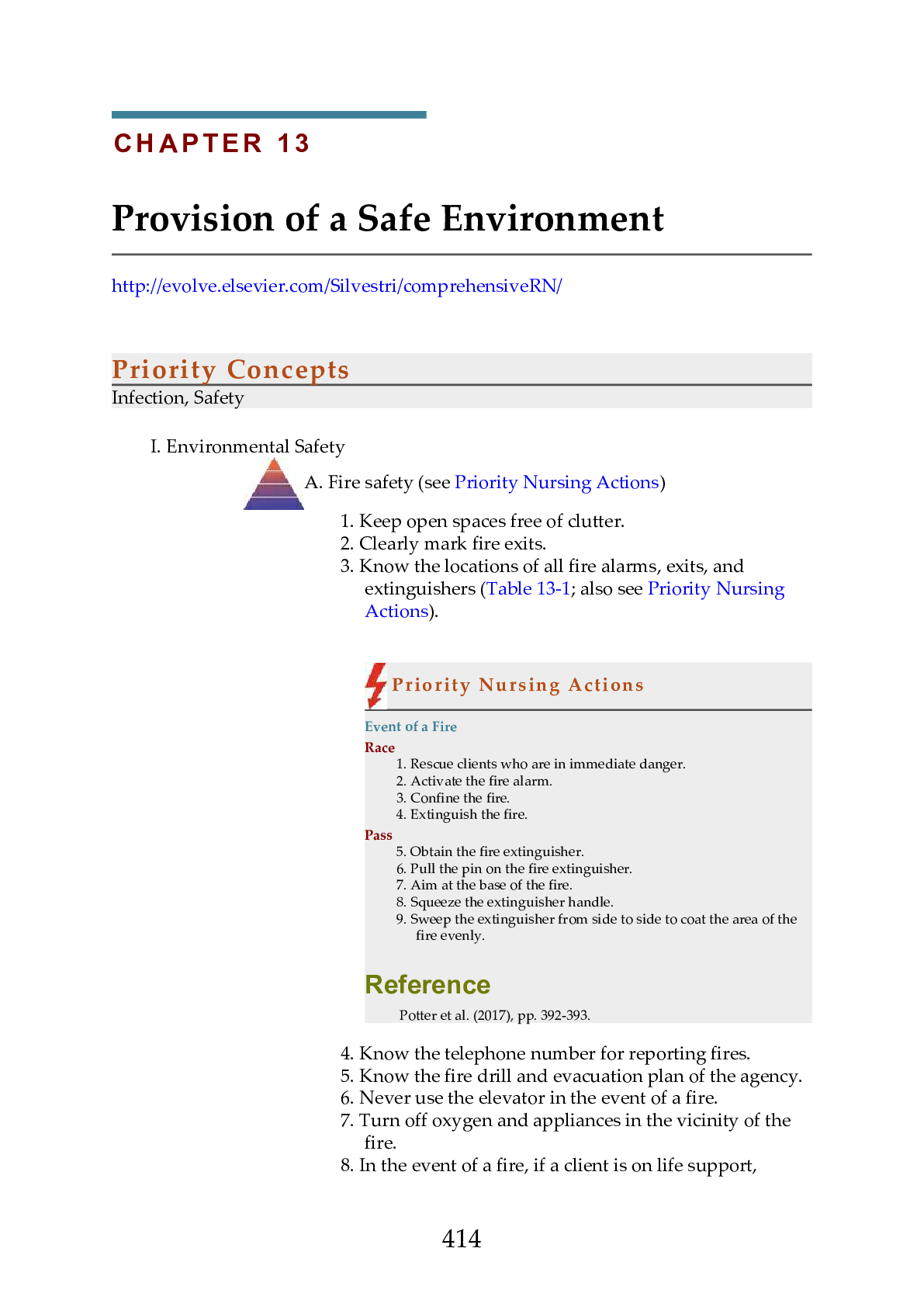


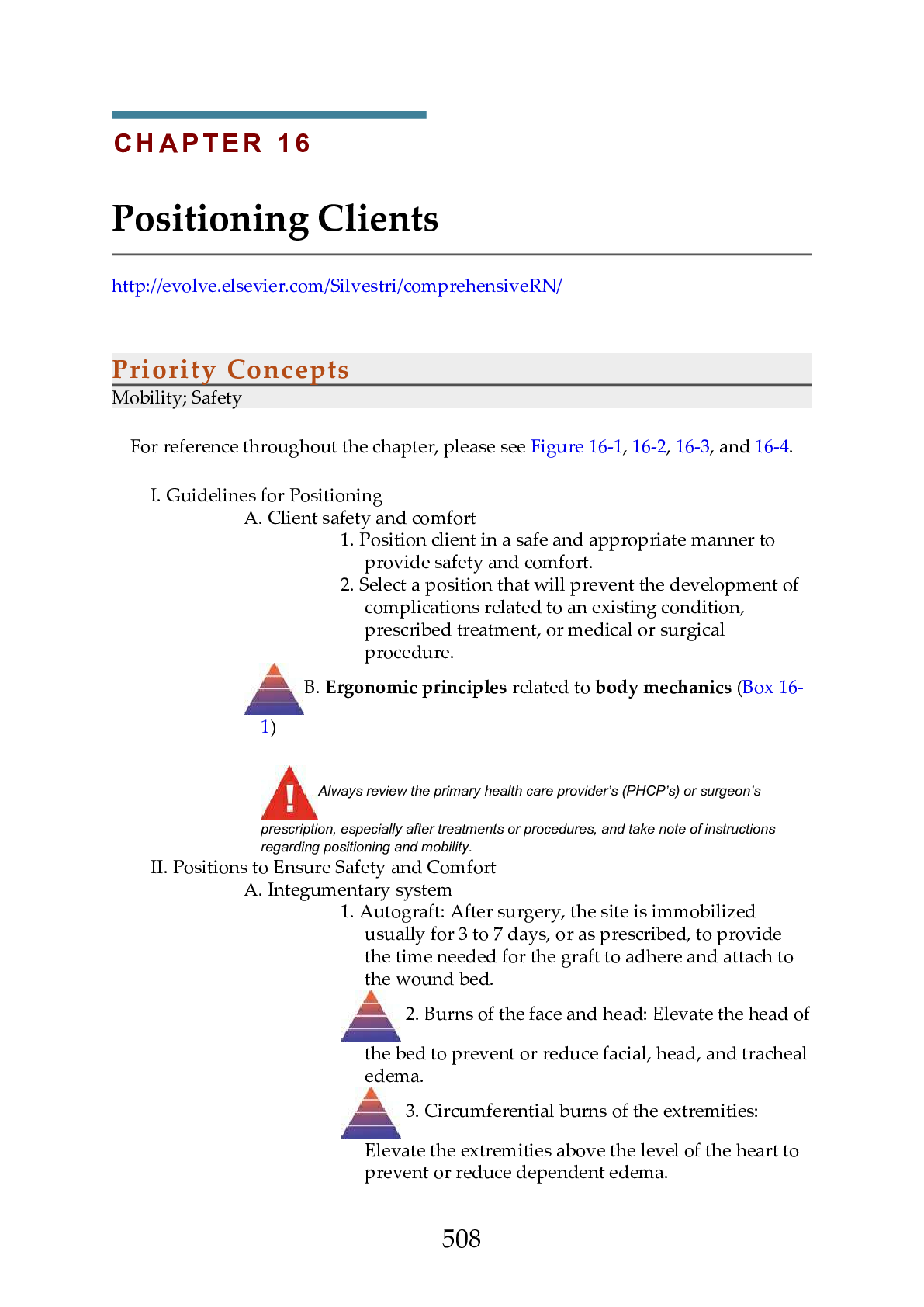

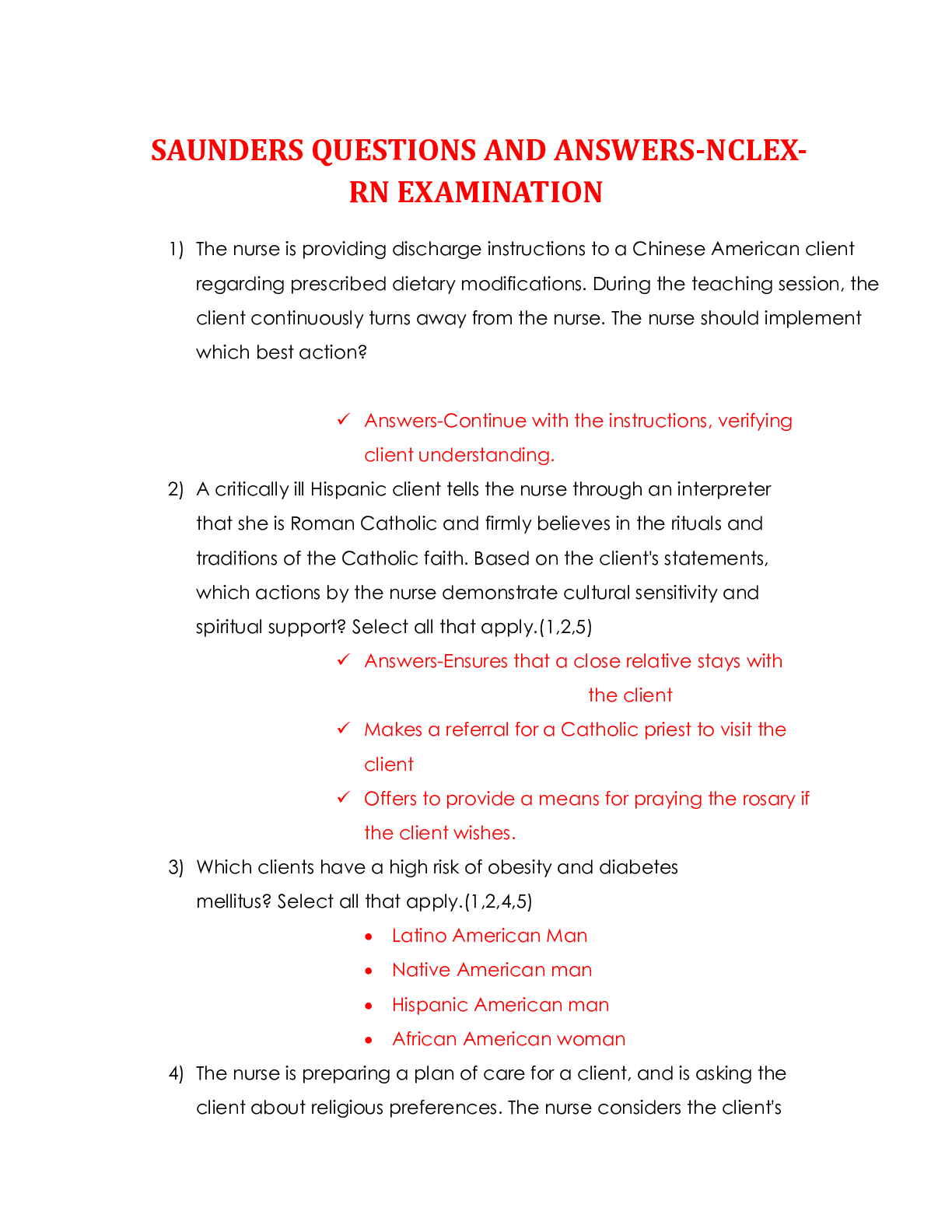

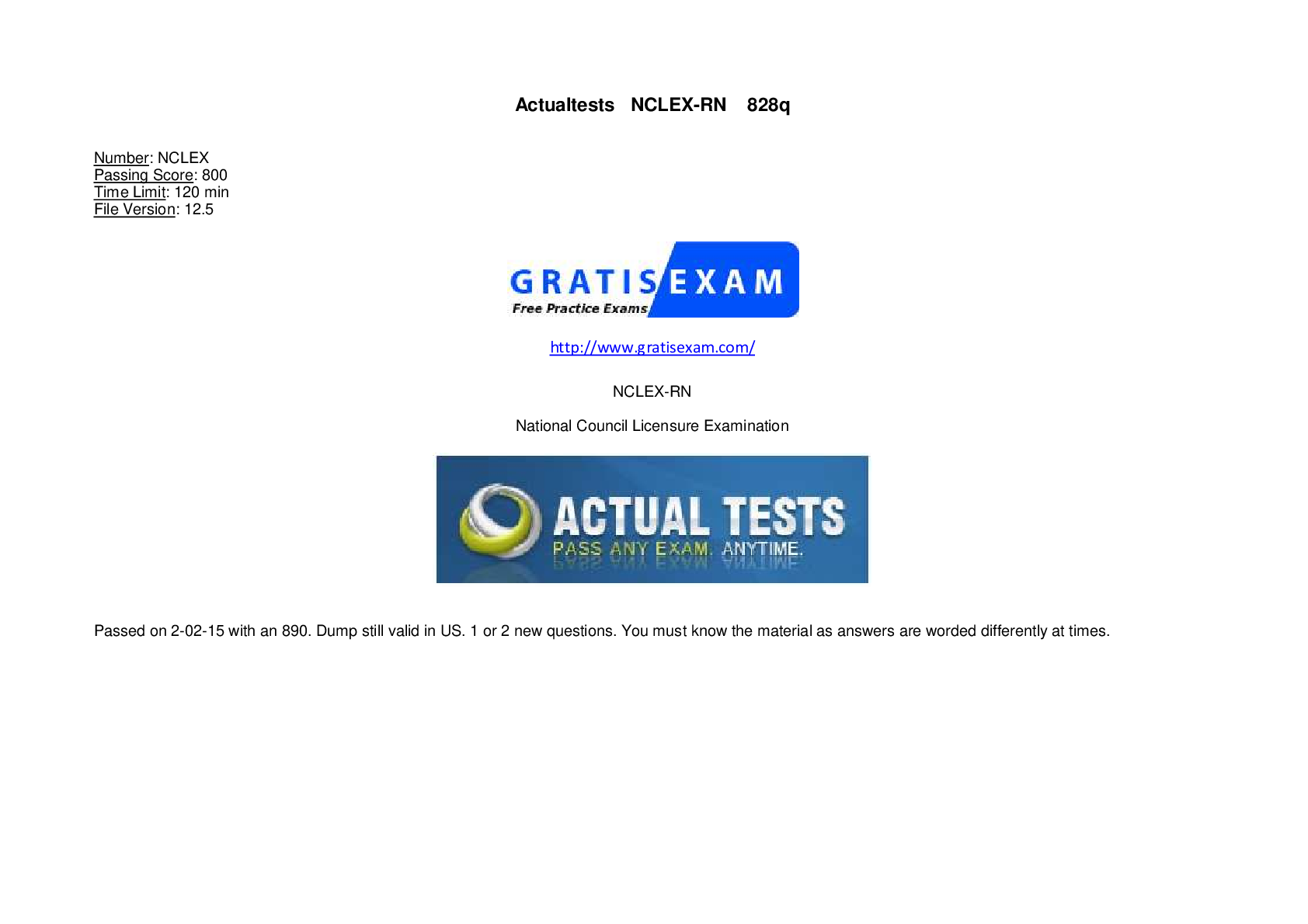
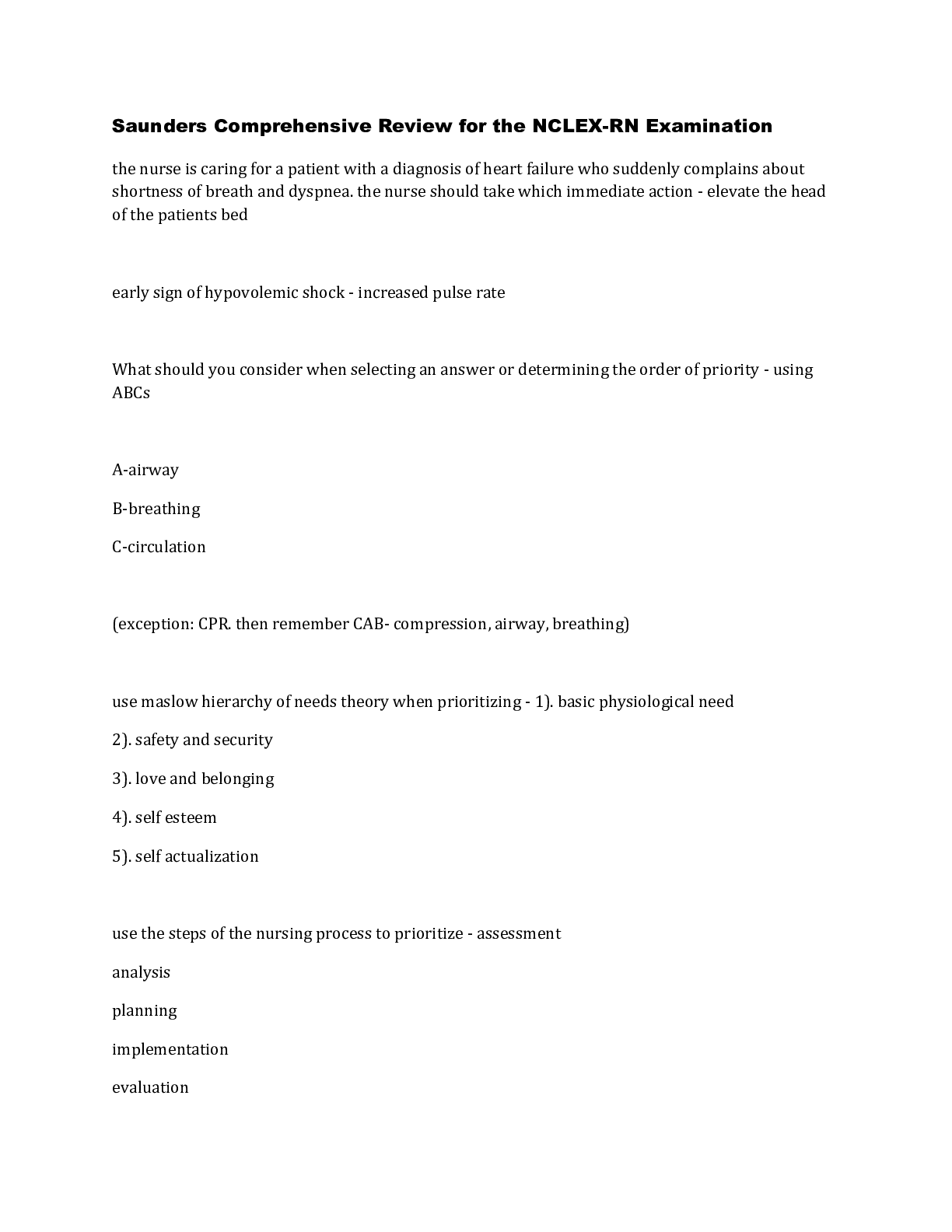


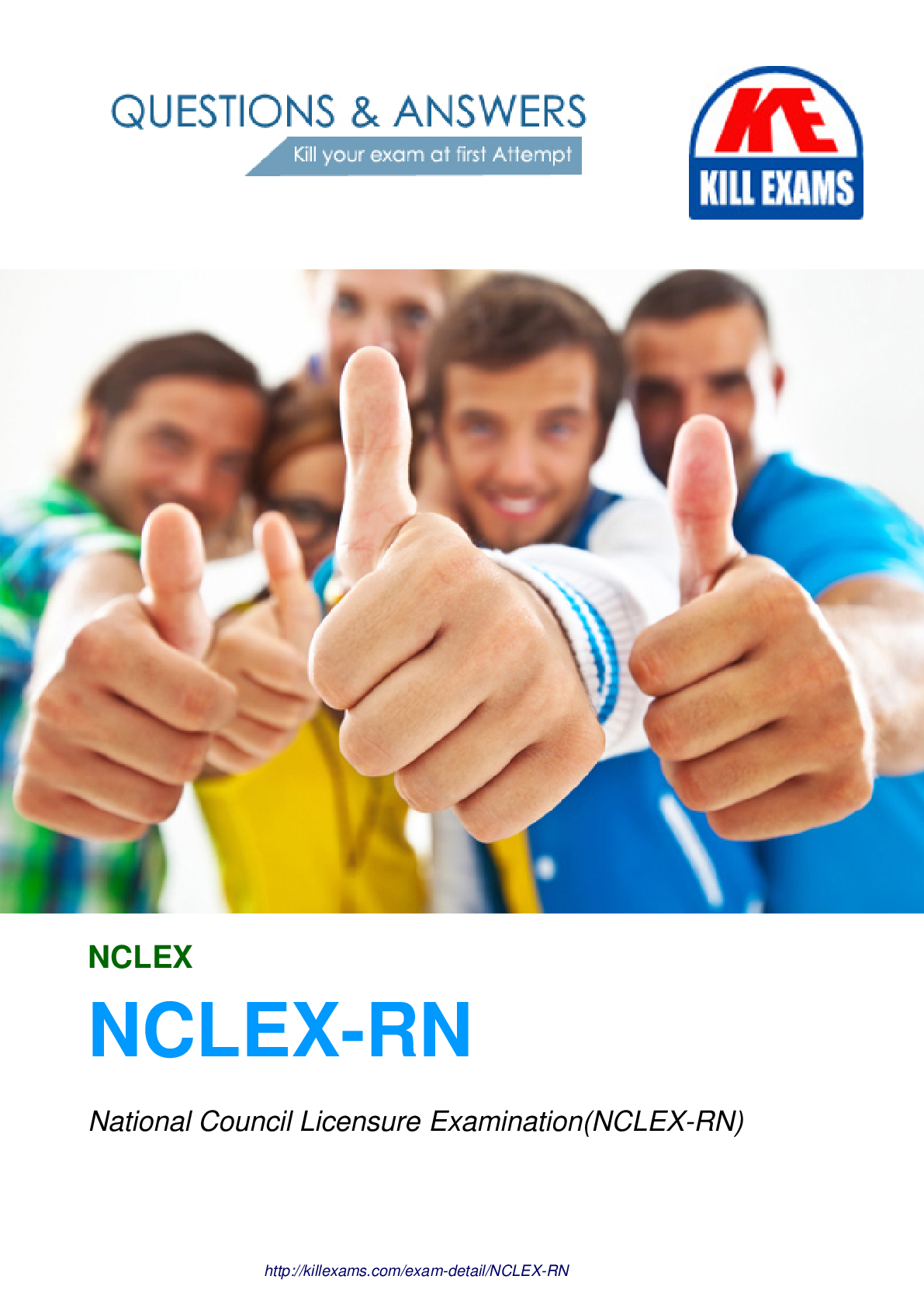


 With 850 Questions And Answers Guaranteed 100% Grade A.png)
